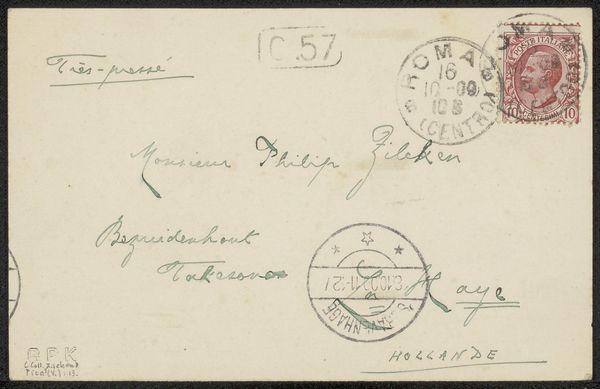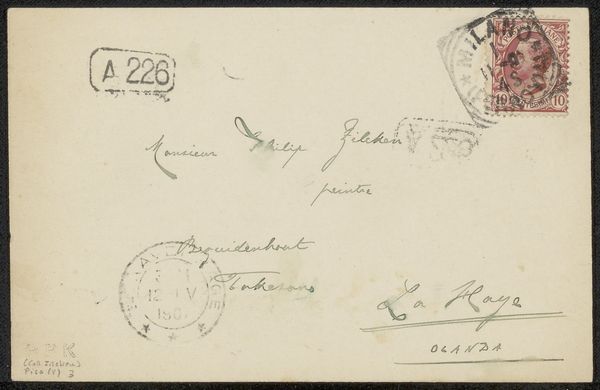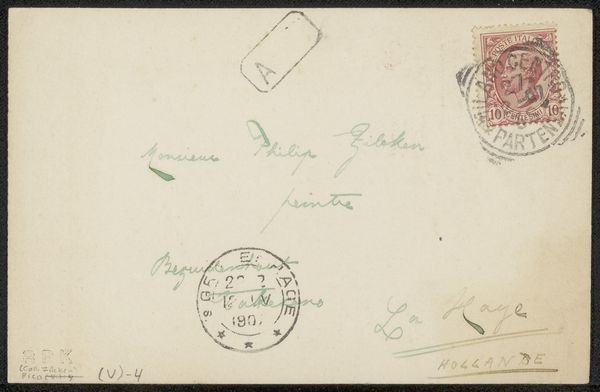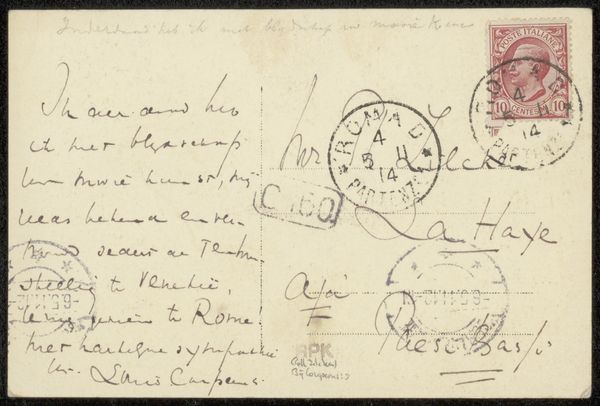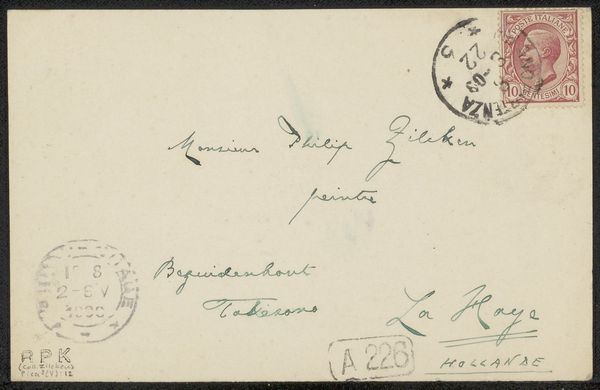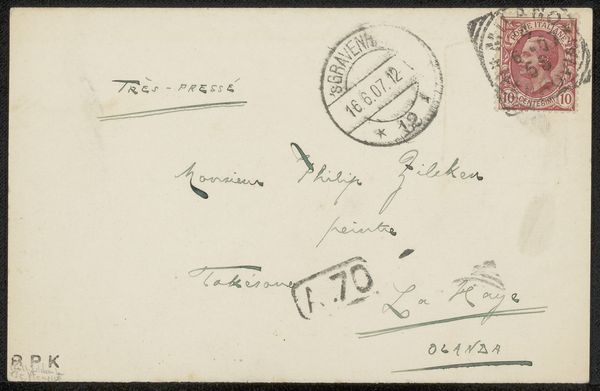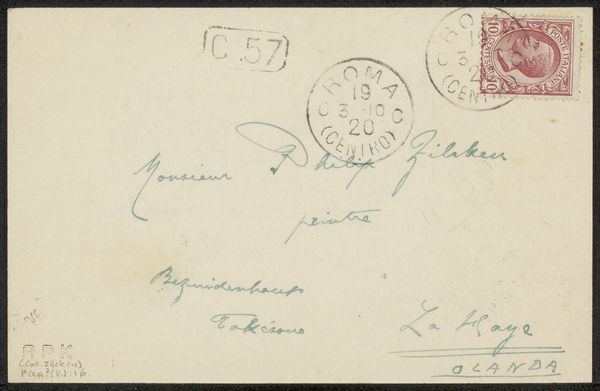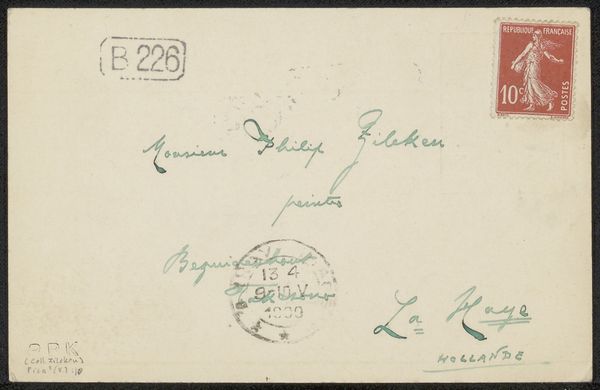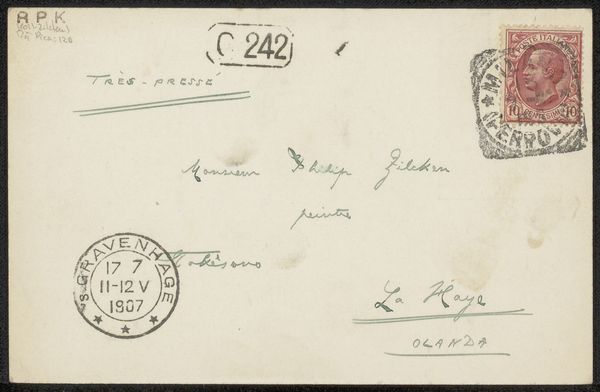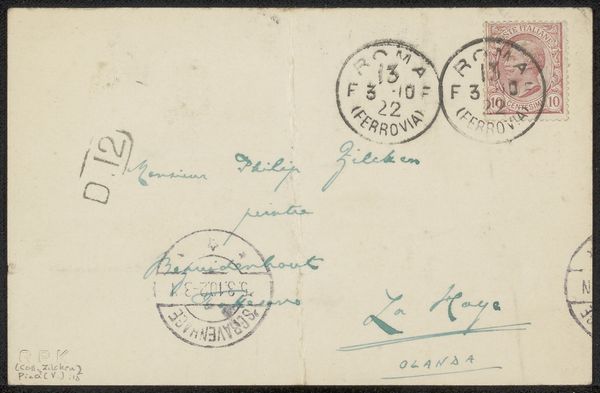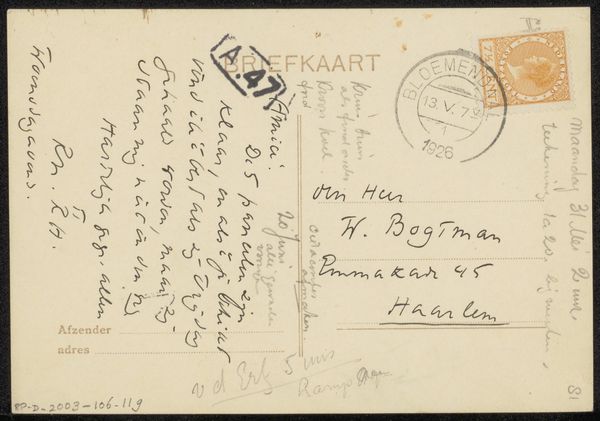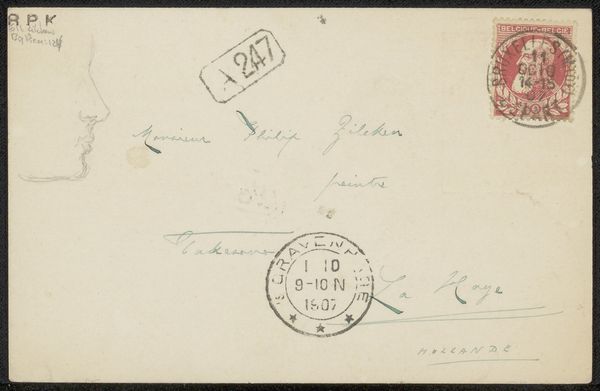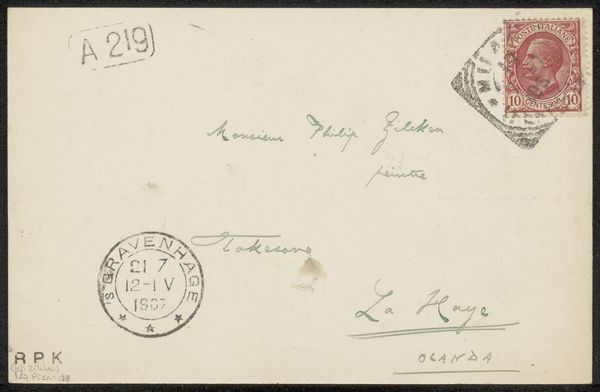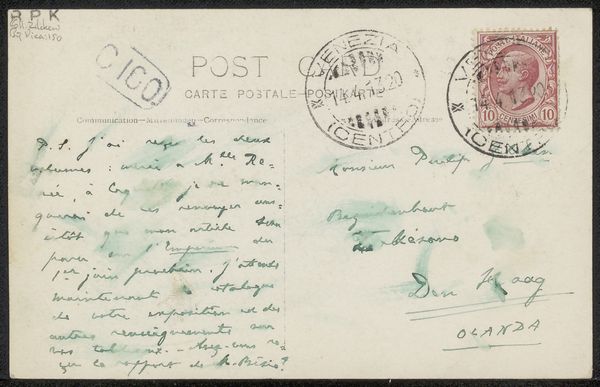
#
ink drawing
#
pen drawing
#
pen sketch
#
personal sketchbook
#
ink drawing experimentation
#
pen-ink sketch
#
ink colored
#
pen work
#
sketchbook drawing
#
sketchbook art
Copyright: Rijks Museum: Open Domain
Curator: Looking at "Brief aan Philip Zilcken," possibly created between 1910 and 1912, we have an intimate glimpse into the correspondence of the time. It’s ink on what seems to be an envelope, offering a snapshot into both artistic process and personal connection. Editor: There's something immediately charming in its simplicity. The interplay of the scripted text, cancellations, and postage creates an accidental composition that’s visually intriguing. It feels ephemeral, almost fragile. Curator: The address, "Monsieur Philip, Peintre," immediately raises questions. Who was Philip Zilcken, and what was the nature of their relationship? The history here is palpable, making me wonder about artistic networks and exchanges happening in that era. Perhaps it represents an introduction, a moment of potential mentorship. Editor: The varied textures are captivating. Notice the clean lines of the address contrasted with the more haphazard postal markings and stamp. There’s a visual tension in how the ink distributes across the surface. Do you feel that the marks accidentally "create" depth and an atmosphere of history that can't be replicated. Curator: Absolutely, and beyond the technical aspects, I see a representation of intellectual exchange. The act of writing, sending, and receiving underscores a sense of community, and the role art played in constructing those bonds. We need to question whose stories remain absent from art historical narratives, to create space for forgotten figures like Monsieur Zilcken, whoever he may be! Editor: Perhaps it shows us that beyond grand narratives and large canvasses, art and design of smaller artifacts of communication also carry tremendous expressive force. There is evidence in the composition to show both formal composition, utility, and ephemeral decay all working in the composition. It is almost as if the object is a window. Curator: The brief correspondence is definitely a witness to history! We need to examine how these seemingly insignificant pieces piece together the wider contexts. Editor: In essence, we both seem to value this small, historical art, perhaps for different reasons but with a single end in mind. Thank you!
Comments
No comments
Be the first to comment and join the conversation on the ultimate creative platform.
